What’s the first thing you think of when I say “1950s”? Is it mad-men suits and sexism? The beginnings of suburbia? The Korean war? McCarthyism? A room full of suit-and-cocktail-dress-clad humans who are all puffing down on cigarettes?
Through our modern lens, the 1950s seem like a hellscape. Yet, as in every era, there were people going against the grain, boldly defying the status quo.
The Peace Pilgrim is my personal favorite.
“She walked more than 25,000 miles, carrying in her blue tunic her only possessions. She crossed America for nearly three decades, bearing the simplest of messages: This is the way of peace; overcome evil with good, and falsehood with truth, and hatred with love.”
From unassuming beginnings
Nothing in her early lifestyle foreshadowed that she’d live out her later life as a penniless, world-peace-preaching nomad.
The woman who would become The Peace Pilgrim, change millions of lives, and be investigated by J. Edgar Hoover’s FBI for “un-American activities” (who wasn’t in those days?) was born Mildred Norman in 1908.
She grew up on a chicken farm outside of Egg Harbor City, New Jersey, and was eventually honored as valedictorian of her high school, a title that ensured her what was then gainful employment as a secretary for a local glass company, earning $20 a week.
This was the roaring ’20s, and Mildred lived it up. She bought flapper outfits, went dancing in Atlantic City on weekends, and even eventually bought a car (not common at this time).
In 1933, she fell in love with a fellow partier, a businessman that her family disliked, and eloped with him. They had everything. Two incomes, nice furniture, and a house. The whole white-picket shebang.
That’s where the “crisis” started
She had everything, and she wasn’t happy. So many interesting stories start like that, don’t they?
Mildred was an avid reader of Life magazine, and she couldn’t get past the fact that she was living this secure, happy life while so many were suffering in the Great Depression. It started to nag at her. She wondered if there was more to life, as so many of us do today. (“Great Resignation,” anyone?)
In 1938, five years after her marriage started, Mildred received what she called “the great spiritual experience.”
“The turning point came when out of desperation and a deep seeking for a meaningful way of life, I walked all night through the woods. I came to a moonlit glade and prayed. I felt a complete willingness to dedicate my life to service… It was a point of no return. After that, I could never go back to self-centered living.”
Thus began what she called “my great fifteen-year transition.” She began volunteering for peace organizations, hospitals, and detention centers. Anything she could do to try and make the world a better place, she did. She felt so fulfilled by this work that she quit her job to dedicate herself to service.
Perhaps most importantly, as a long-time lover of the woods, she started hiking. She joined a group that called themselves Endurance Hikers and started racking up 30- to 40-mile weekends.
She gave everything away to live simply
As is often the case when people go to nature with a clean heart, Mildred started to realize that all of the stuff she had surrounded herself with was just layers and layers of material crap that she didn’t need. She gave away everything except two dresses and started to live on $10 a week.
The Women’s International League for Peace and Freedom offered her a job, and she started campaigning for world peace in Washington (this was during World War II, and the atomic bomb was being developed).
Obviously, Washington didn’t listen.
Then came the divorce
Her husband, who at this time was unemployed, wanted to enlist and go fight in World War II. She begged him not to, and he agreed. But then he was drafted. She asked him to go to jail rather than go fight. He decided to go, so she said, “As long as you are involved with the military, I will not act as your wife.”
When her husband arrived at boot camp, he told his commanding officer this story, and the officer said that that attitude was grounds for divorce. Mildred received a brown envelope full of divorce papers a few months later (the 1930s equivalent of a breakup over text).
Here’s where it gets interesting
So we’ve got a woman in her 30s, recently divorced, who wants to impact the world in a positive way but doesn’t know how to, and who loves nature. Sound like any stories you know?
She took off and hitchhiked across the country for a few years in the late 1940s. She made it her mission to talk to as many people as possible and feel the pulse of the country.
This was the era of McCarthyism. People were afraid to speak truthfully, lest they get reported for being “communist,” and get caught up in the witch hunt. Your options were:
Be silent.
Be pro-war.
Speak out against the war and be labeled as a communist.
After feeling the sentiments of the people, but still not knowing what her purpose was or how she fit into all of this, Mildred decided to walk the Appalachian Trail.
This was long before internal frame backpacks, ultralight hiking gear, or freeze-dried meals. In her own words:
“I lived out-of-doors completely, supplied with only one pair of slacks and shorts, one blouse and sweater, a lightweight blanket, and two double plastic sheets, into which I sometimes stuffed leaves. I was not always completely dry and warm, but I enjoyed it thoroughly. My menu, morning and evening, was two cups of uncooked oatmeal soaked in water and flavored with brown sugar; at noon two cups of double strength dried milk, plus any berries, nuts or greens found in the woods”
How crazy is that?! My favorite part is “into which I sometimes stuffed leaves.” What were the leaves for? Insulation? Did she just like leaves?
Anyway, I digress.
Mildred became the first woman to through-hike the Appalachian Trail.
As is always the case, Mildred wasn’t the same person when she reached the end. The trail turned her into The Peace Pilgrim.
The vision
On a mountaintop in New Hampshire, toward the end of her hike, Mildred saw a vision.
The mountains in front of her vanished, and she saw a map of the United States spread out in front of her. Stood on the map, walking, ever walking, she saw a small version of herself, dressed all in blue, with white words reading “Peace Pilgrim” across her chest.
At that moment, she understood that the last 15 years had been preparation. She’d learned to live simply, given away most of her money, and proved to herself that all she needed were a few clothes and some basic food.
She was ready to become something much bigger than herself.
The beginning of a legend
At the head of the 1953 Rose Parade in Pasadena, Peace Pilgrim began her 25,000-mile journey (the real mileage is unknown; Peace Pilgrim herself stopped counting after 25,000) handing out leaflets to anyone who was interested.
In her own words:
“It was the proper time for a pilgrim to step forth. The war in Korea was raging and the McCarthy era was at its height ….There was a great fear at that time and it was safest to be apathetic. Yes, it was most certainly a time for a pilgrim to step forward, because a pilgrim’s job is to rouse people from apathy and make them think.”
After that parade, Peace Pilgrim turned east to make her first of six cross-country trips. On her first pilgrimage, she traveled with three peace petitions:
A petition requesting immediate peace in Korea.
A petition asking the U.S. government to the establish a national Peace Department.
A petition to the U.N. seeking nuclear disarmament.
When she arrived on the East Coast 11 months later, the signatures that she and others had collected were presented to the U.N. and the U.S. government.
A life well-lived
She walked the rest of her life, wearing only a simple blue tunic with all her possessions rolled inside. Those possessions were:
A comb.
A folding toothbrush.
Blue leaflets preaching her message of peace that she would hand out along the way.
Mildred didn’t even keep her name, leaving it behind when the FBI began to harass her sister’s family, believing that this “peace walker” was a communist.
She crossed the country six times, slept where she could, carried no money, and depended on the charity of others for food and shelter. She did not ask for food, she waited until it was offered to her or ate what she could find in the wild. When it got cold, she moved south. When it was warm, she moved north.
Everywhere she went, she spread the message of inner and outer peace, telling people that they could attain it. In her own words:
“I was determined to live at the need level, that is, I didn’t want more than I need when so many have less than they need.”
To learn more about Norman, go to Peacepilgrim.org.
Sources:





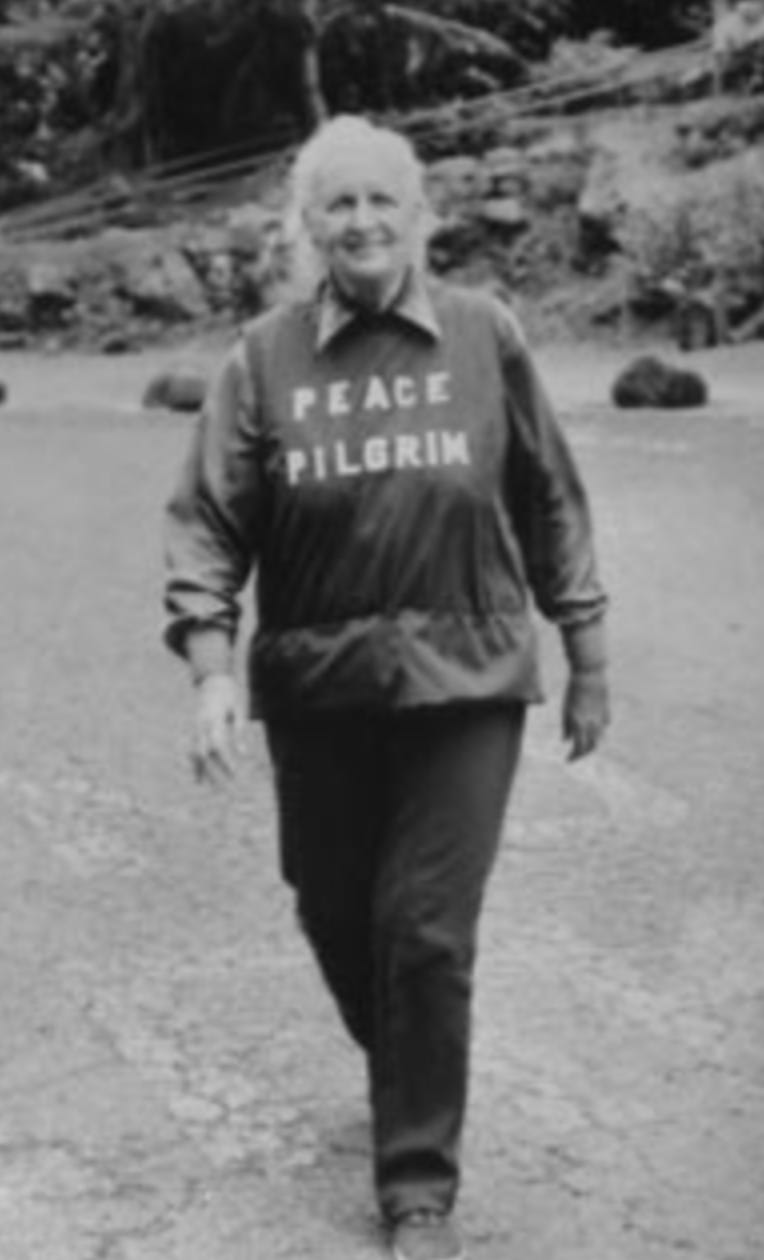

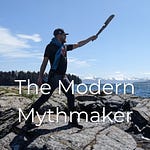
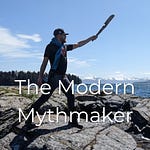
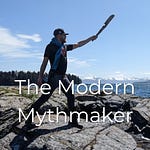

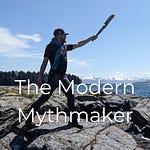

Share this post